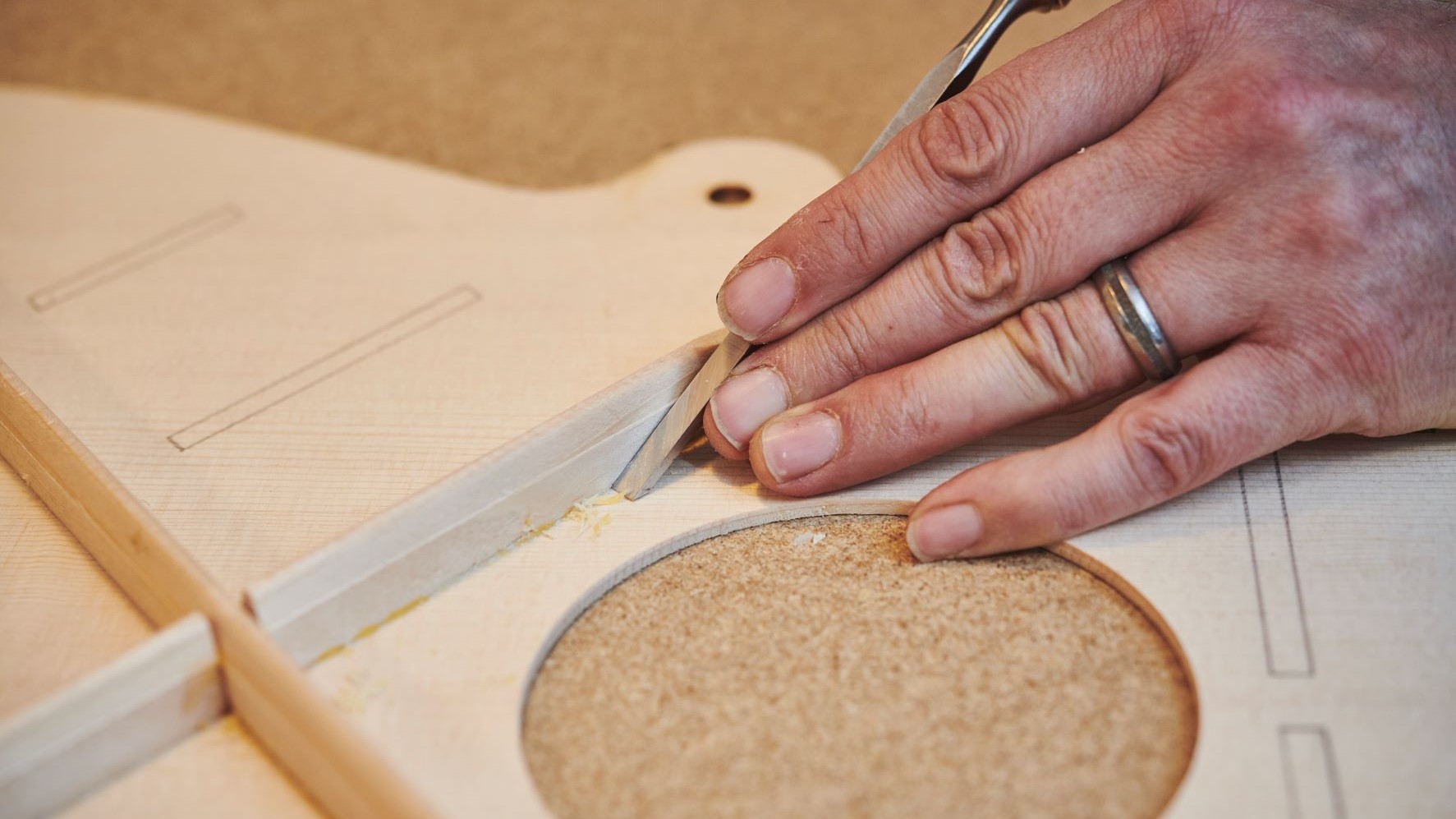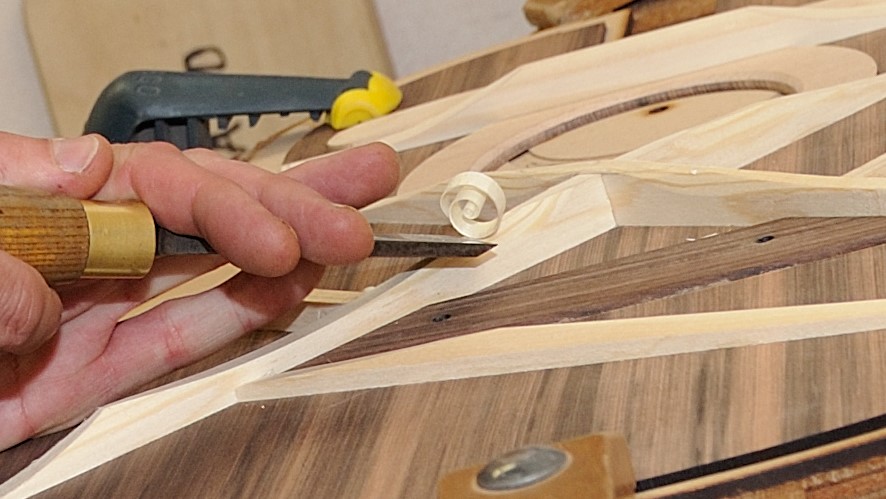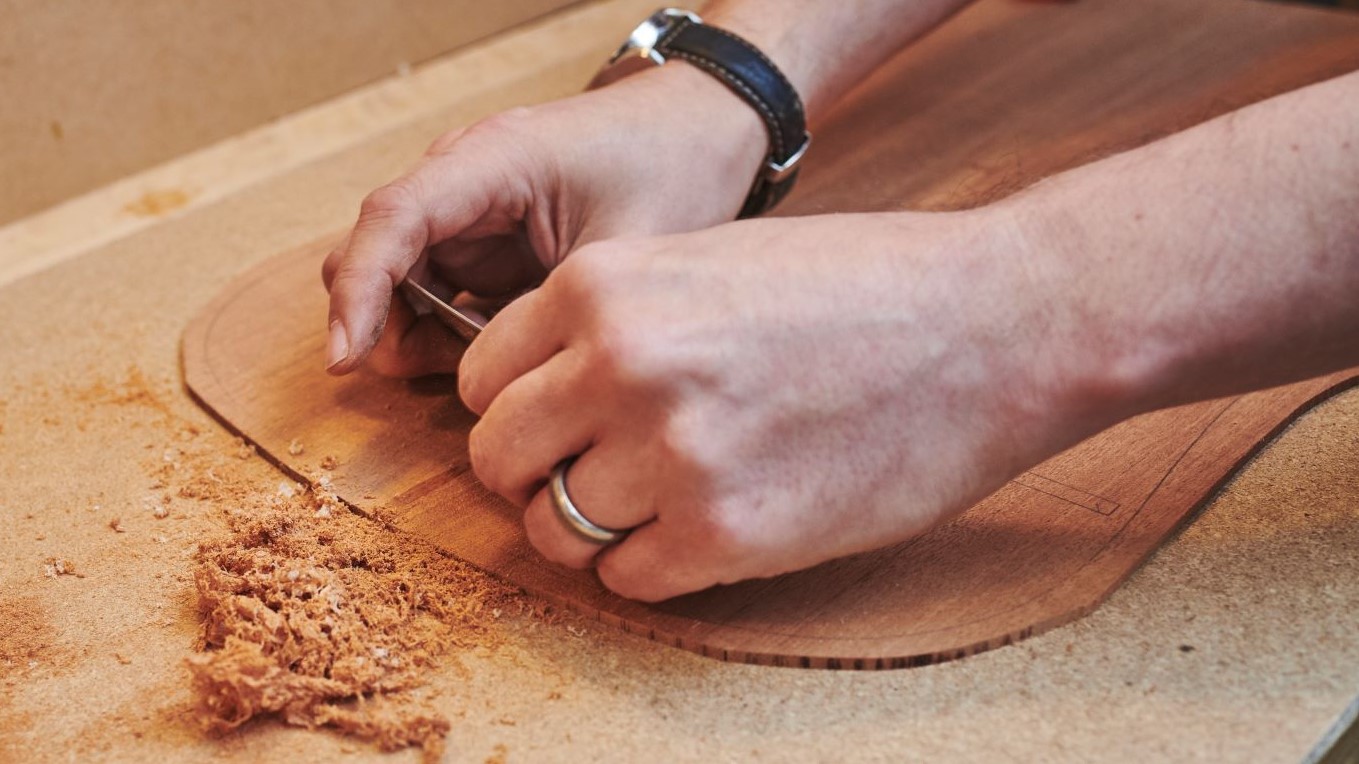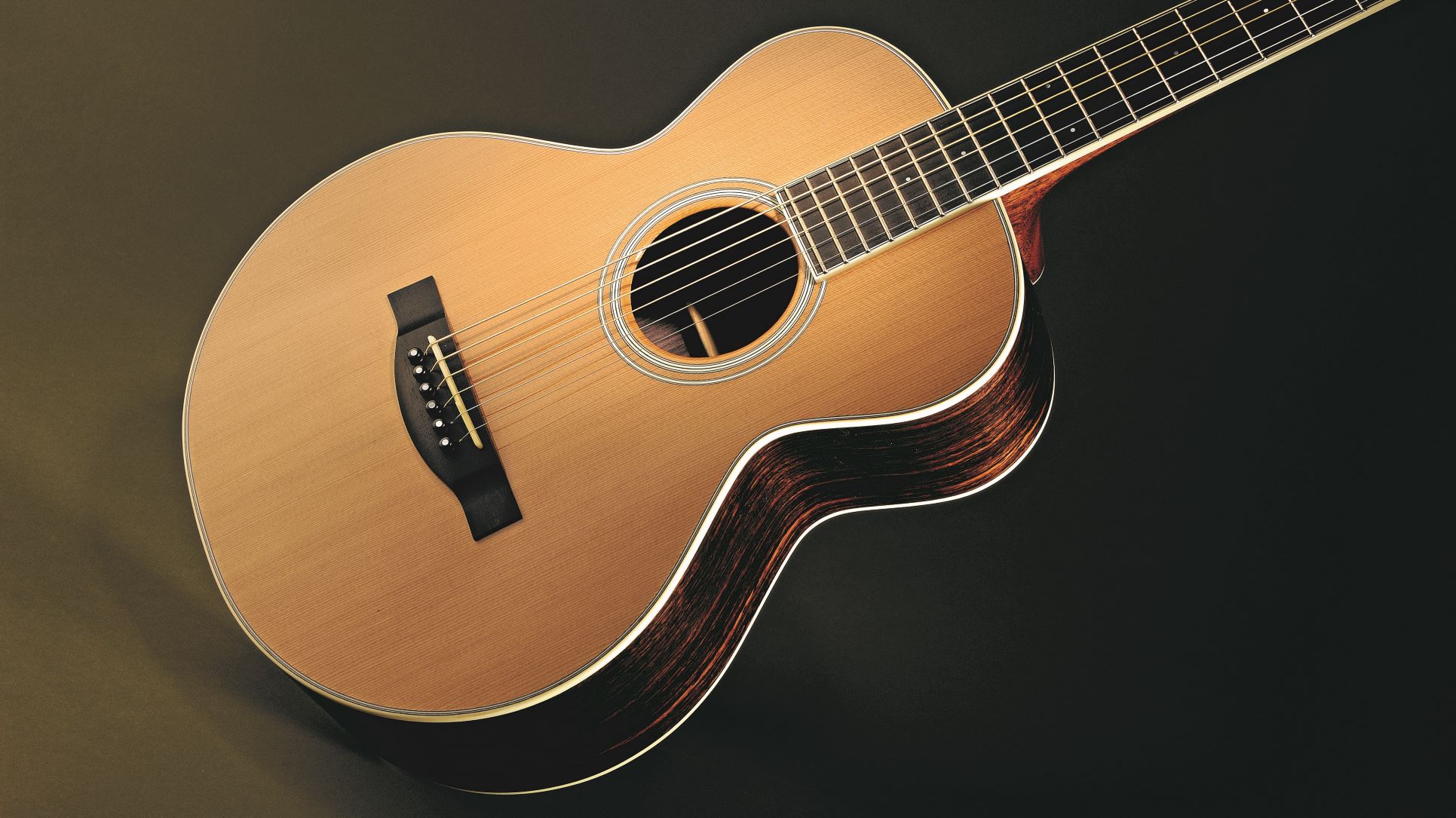The Highs and Lows of Acoustic Guitar Equalization: How Luthiers Control Treble and Bass in the Build
Santa Cruz Guitars founder Richard Hoover reveals the tricks of the trade.

Tonewoods contribute to how dark or bright an instrument sounds, while manipulation of the woods determines the frequency equalization. “A luthier can control the balance of bass and treble by way the braces are placed and how they’re shaped, just like working the graphic EQ on a stereo,” says Santa Cruz Guitars founder Richard Hoover.
What’s the general rule for manipulating an acoustic guitar top to control equalization?
Anything that makes the top more flexible increases bass, and anything that stiffens it increases treble. If the top is done intelligently, it’s not going to be the same thickness on the bass side as the treble. That’s another way to control equalization.
Can you give an example of how you would treat a guitar top with a particular bracing?
Scalloped bracing is a way to boost bass. People say scalloped bracing is better because it makes the guitar louder, but it doesn’t. It makes the bass more predominant, and since our ears hear bass more readily than higher frequencies, the perception is a louder guitar.
Shifting the X toward the soundhole and bringing the legs up higher – what we call “advanced forward-shifted X bracing” – makes the whole lower bout more flexible, increasing the bass-enhancing aspect of scalloped bracing.

A tapered bracing achieves a more even balance of bass and treble. We can also hybridize the bracing in any degree of combination to achieve an EQ that’s somewhere between boosted bass and evenly balanced. For example, we can scallop the tone bars and leave the X legs tapered, or scallop the X legs and leave the tone bars tapered.
All the latest guitar news, interviews, lessons, reviews, deals and more, direct to your inbox!
Just as the graphic EQ on a stereo yields infinite combinations, so does hybridizing the bracing shapes on a guitar. It’s not an either/or situation.
Are there other ways to control EQ simply by manipulating some aspect of the wood?
Of course a bigger body size with more air space is inherently going to have more bass than a smaller guitar, but the diameter of the soundhole is another interesting way to control EQ. The larger the soundhole, the higher the resonant frequency of the air chamber, and the more the guitar will accentuate midrange and treble.
The smaller the soundhole, the lower the resonant frequency, and the more the guitar will accentuate bass. So for a big dreadnought predisposed to bass, a large soundhole is useful to bring up midrange and treble. On a parlor guitar, a small soundhole works well to accentuate bass. It’s counterintuitive, but that’s physics.

Interesting, but there’s got to be some limit, otherwise wouldn’t we see tiny soundholes on every parlor guitar?
Well, it would have the same amount of sound, but it wouldn’t go out to the audience, and the optics would put people off. Sometimes you could take a proportion to a degree trying to achieve a certain sound, but it just wouldn’t look right. You want the guitar to function well, sound great and look proportionally correct.
It’s always a matter of balancing structural integrity, resonance and a cool design.

For more information on Santa Cruz guitars click here.
Jimmy Leslie is the former editor of Gig magazine and has more than 20 years of experience writing stories and coordinating GP Presents events for Guitar Player including the past decade acting as Frets acoustic editor. He’s worked with myriad guitar greats spanning generations and styles including Carlos Santana, Jack White, Samantha Fish, Leo Kottke, Tommy Emmanuel, Kaki King and Julian Lage. Jimmy has a side hustle serving as soundtrack sensei at the cruising lifestyle publication Latitudes and Attitudes. See Leslie’s many Guitar Player- and Frets-related videos on his YouTube channel, dig his Allman Brothers tribute at allmondbrothers.com, and check out his acoustic/electric modern classic rock artistry at at spirithustler.com. Visit the hub of his many adventures at jimmyleslie.com
